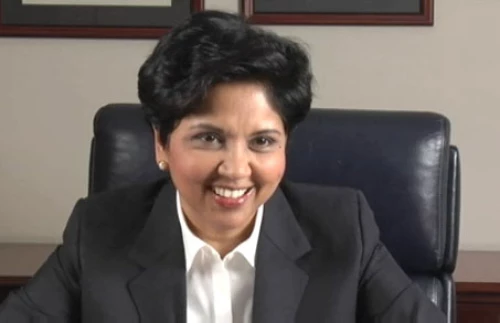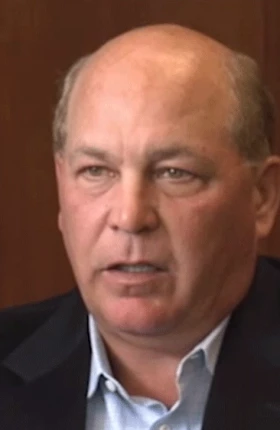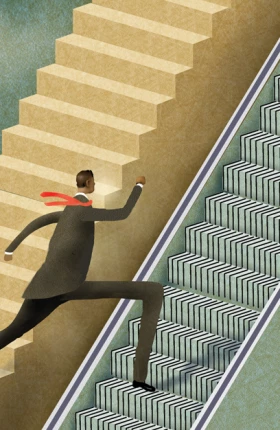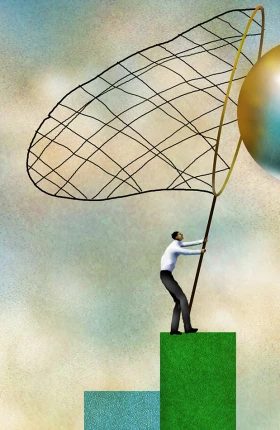About three years ago, shortly after Indra K. Nooyi became chief executive officer, PepsiCo embarked on a corporate mission—“performance with purpose”—meant to marry financial success and social responsibility. The Great Recession has only strengthened Nooyi’s belief that performance and purpose mutually reinforce each other. PepsiCo’s emphasis on environmental sustainability, for example, is more relevant than ever today, because going green can actually save money and, along with other acts of citizenship, attract and retain the talent needed to succeed in difficult times.
If Nooyi says that she has not changed her leadership style during the recent economic turmoil, it is mostly because she has believed for several years that tomorrow’s leaders must have fundamentally different skills from those required of executives in the past. These include the ability to work closely with public officials and to exhibit emotional intelligence toward employees. She also stresses the need for leaders to have direct personal understanding of the markets and cultures in China, India, and other growth spots. Nooyi herself spent two weeks in China last summer, making sure to get out of conference rooms and into the countryside and people’s homes.
In a conversation with Grant Freeland, senior partner and managing director of The Boston Consulting Group, Nooyi elaborates on her views about the changing nature of leadership. Excerpts follow.
Could you briefly describe your personal background and your professional background?
I’ve been at PepsiCo for 15 years and became chairman and CEO about three years ago. Before my time at PepsiCo, I was at Asea Brown Boveri and Motorola, and before that, I cut my teeth at BCG. I am married, have two kids, and am trying to juggle being a CEO, a mom, a wife, a daughter, and a daughter-in-law.
You talk about performance with purpose. Could you describe this idea?
Performance with purpose is what I’d like PepsiCo to stand for. I’d like that to be the way we do business. My honest belief is that corporations are little republics in their own way. Look at PepsiCo. Our market capitalization is almost $100 billion. We’re bigger than many countries. We have enormous influence in the world. But we cannot be guided purely by the earnings cycle, or we might end up adding costs to society. We have a profound role to play in society, and we have to make sure that we are constructive members of society.
Was performance with purpose challenged during this last 18 months as the economy worsened?
I have to go back and explain to you the origins of performance with purpose to explain why it was untouched by the events of the last 18 months. In fact, I’d say that it was reinforced by the downturn. Purpose has three elements. The first is human sustainability. How do we make sure that we provide products that range from treats to health foods and allow customers to make balanced, sensible choices? The second element is environmental sustainability. How do we make sure that, as a company, we replenish the planet and leave the world a better place than it was when we began playing around with it? The third element is talent. How do we make sure that people who work for PepsiCo are able not just to make a living but also to have a life?
The most important part of performance with purpose is the use of the word “with.” It’s performance with purpose, not performance and purpose, or performance or purpose. Unless you focus on purpose, you cannot deliver performance. And unless you deliver performance, you can’t fund purpose. This is a very closely linked ecosystem. If we do not transform our portfolio, we cannot sustain performance. If we do not become greener than we are today, young people are not going to come to work for us.
During this downturn, people realized that it’s even more important to focus on portfolio transformations and to be green, because being green actually saves you costs. And in today’s environment, people still want to eat healthy foods. The downturn has reinforced all the elements of performance with purpose.
In a recent speech, you talked about five ways in which the role of the CEO will change. Could you elaborate on those five characteristics?
I based these observations on my wandering around the world and leading our company. First, you have to focus on the long term. The notion of focusing only on short-term earnings is a thing of the past. Too many companies have not done right by their shareholders by focusing strictly on the short term.
Second, you need to understand that public-private partnerships are critical for companies to be successful. The world has become much more complex, and the only way companies can function effectively is if we put ourselves in the shoes of lawmakers and nongovernmental organizations (NGOs), and they put themselves in our shoes. We can’t have an adversarial relationship.
Third, you must be able to think globally and act locally. This is an old notion, but we must take it to a whole new level. Half of humanity lives east of the Middle East. Western models cannot simply be applied to those markets because they differ culturally. The civilizations are vastly different. They speak different languages, and their religious backgrounds are different. Our businesses in those markets need to tailor products, business models, and people practices to the local market.
Fourth, you must become much more open-minded. CEOs have to become learning CEOs. Not only do we have to learn the next leadership principle or the next management practice, but we also have to learn about technology and the younger generations. To be able to manage these young kids who are coming to PepsiCo, we have to be able to think digitally and be able to manipulate all this new technology.
Fifth, you must develop emotional intelligence. Today’s young people do not want to be wedded to a job like the people of my generation were. If you do not treat them right, people today will say, “Goodbye, we’re going to the next job.” The only way you can hold onto these employees is by hooking them emotionally to the company, through our business model and what we stand for. But you also need to be able to look at that person and say, “I value you as a person. I know that you have a life beyond PepsiCo, and I’m going to respect you for your entire life, not just treat you as Employee Number 4,567.”
You talk about thinking globally and acting locally. How do you make that a reality at PepsiCo?
Many companies take a global product and send it to Asia painted in a local color or given a local flavor. But the way people live east of the Middle East is vastly different from how they live in the rest of the world. As a Western company, we at PepsiCo have to make doubly sure that we don’t just export a model and say, “Give it some local colors or local flavors.” We actually have to tell our people, “Develop a model in your country that’s right for your country.”
Let’s take PepsiCo’s beverages. In the developed markets, we work with large stores. We can develop hundreds of new products, and stores have enough space for them. Now let’s consider India, which has tiny stores. How can we introduce lots of new products there? We can’t do it. So the question is, How do you still give the consumer in India a choice?
We need to think about the needs of a country and the way people live and behave in that country. How can you stay true to the business you’re in while delivering choice in a completely different way—one that’s sensitive to the unique needs of a country?
You talked about needing to be open to cultures and customs. How do you find the time when you’re running a company the size of PepsiCo?
First, you surround yourself with great people, who run the businesses. Then, you start traveling. You cannot just swoop like a seagull into and out of a country or a city. In the key markets and cities, you need to make sure you spend quality time. This summer, I spent two weeks in China. I went to consumers’ homes and visited with both younger and older people there, trying to understand how they live, what they think about products, and what we should be doing differently as a company. I visited a school of traditional Chinese medicine to understand how the Chinese practice prevention and cure and how our products might play a role.
You talked about public-private partnerships. Are you spending more time with the external world now than you were before? Has the recession exacerbated that trend?
Governments have gotten more intrusive. They’re challenging corporate governance issues in every which way, and the trust in companies is at an all-time low. I am spending a lot of time with lawmakers, presidents, prime ministers, commerce ministers, health ministers, and NGOs. That’s the new reality.
Let’s just focus a little bit more on the last 18 months. What were some of the actions that Pepsi took to manage a drop in demand?
Early on, we realized that we were going to have a slowdown. We launched a restructuring program in October 2008, and we made some fairly deep cuts to create some breathing room, because we wanted to keep reinvesting in the business through the downturn. We did not want to cut back on all of our long-term investments. We actually thought this might be the right time to make some long-term bets.
Did you cut research and development?
We increased R&D through the downturn. The economy enabled us to hire great people and make investments with external companies at a much lower cost since there were fewer companies competing for those resources.
In periods of crisis, leaders can be tempted to take greater control and drive change from the top. Is that what happened in this situation?
We set the agenda very, very carefully. First, we were very visible, doing as much walking around as possible. The way that the CEO projects himself or herself on the organization sets the mood for the company. So by being visible and not hiding myself in my office, I was telling people, “Hey, things are okay. We’ll come out of this okay.”
Second, we kept on trying to practice what I call realistic optimism. Be realistic, but don’t project doom and gloom. I kept saying to our employees, “The economy’s bad, unemployment is going up, but we’ll do okay. And the reason we’ll do okay is because of A, B, C, and D. And the good news is that we’re a consumer staple company, so we won’t be affected as much.”
Third, we undertook brutal prioritization. At the beginning of the year, we started with five priorities and we kept hammering on those priorities every quarter, in every town-hall meeting, in every interaction we had with the employees, and in every piece of communication.
Fourth, once we gave the line managers their agendas, we let them loose and said, “Go make it happen.” And the only time I got intrusive is when a business needed to be turned around. In a downturn, it’s even harder than usual to turn around a business because the rules are changing, the marketplace is changing, and the consumer value proposition is changing. So I picked my battles.
We are likely entering a period of low growth. Historically, growth has been a very good motivator for people. How do you keep employees motivated in a slower-growth environment?
If you look around the world, there’s still growth, but we have to view our portfolio differently. Although developed markets may not grow as fast as they have in the past, developing and emerging markets will grow faster. We have to make sure people understand that growth patterns will shift. We also must give people the opportunity to work in international markets if they’re so inclined and have the capability. And as long as PepsiCo keeps doing well, people will be okay.
Within PepsiCo, do you think that the importance of the global market is recognized?
Among the senior leadership, it is. But I think it will take time for the rank and file to understand that international growth is a critical part of our future.
You wrote the parents of your 29 senior executives. Why did you do that and what did you learn?
When I was visiting India two years ago, I went to visit my mum, and she wanted me to dress up and sit with her as she entertained all her friends, neighbors, and second through fifth cousins, who were coming to visit. When all her guests came in, they ignored me. They didn’t even say hello. They went to my mum and said to her, “You brought up such a good kid.” They complimented my mother and didn’t really focus on me.
That’s when I realized that I had not told the parents of the executives who do such an extraordinary job for PepsiCo that they themselves did a great job bringing up their children. When I came back from India, I wrote to those parents and told them how much they contributed to the success of PepsiCo through the gift of their son or daughter. And it unleashed emotions that were unbelievable, creating an emotional bond among the executives, their parents, and me.
As you reflect on the last couple of years, what have you learned that surprised you?
Being a CEO is not that much fun after all. [Laughter.] This is more than a job—it’s a calling. It’s 24/7. And it’s no longer about dealing with the traditional cast of characters—your employees, customers, suppliers, investors. You are dealing with governments, with NGOs, and with any interested party that decides to take on the company. So this is a whole new environment, and the role of the CEO has forever changed. Aspiring CEOs have to understand that they are signing up for a lot more than CEOs did in the 1970s, 1980s, 1990s, and even four or five years ago.






